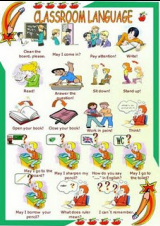What is Pragmatics?

Pragmatics studies how language is used by real people in
real contexts, in spoken discourse and written contexts, and is highly
influenced by cultural and social contexts. When considering pragmatics in American educational settings, we must consider the structures and context of Western culture in shaping how we use the different varieties of English between speakers, in the classroom, and in American society for different purposes.
Speech act theory describes how language is used to accomplish things or acts, involving:
The cooperative principle of speech states that speakers and listeners must cooperate to both contribute to conversation by using purposeful speech as well as listening with purpose of conversation in mind. In this conversational relationship, there are guidelines for speech, known as conversational maxims, including rules such as “Make your contributions as informative as required.” and “Do not say what you believe to be false.”. These guidelines are not hard and fast and are often not all followed, such as when people change how they speak to consider others' feelings (politeness) or use little “white lies” to spare feelings. In conversation, there is a pattern of conversation, starting with an opening dialogue, body of the conversation, and then closing words. Discourse markers are words used by a speaker to connect a phrase or sentence to the previous or following words and help a listener to understand the speech in relation to the relationship between themselves and the speaker. Some discourse markers include words such as so, however, then, say, look, and, but, etc. Style of talking varies greatly across social settings, when considering informal and formal speech. We can see style shifts from more to less formal depending on context and purpose of conversations. Also, in different social groups, there are changes in how people speak to distinguish certain social identities. Code switching is when people switch between or mix dialects or languages within one sentence or conversation, which is often seen in conversations among bilingual speakers. In written discourse, genres are types of texts that tend to occur or are connected with certain contexts or occasions for certain purposes, such as nonfiction texts, persuasive essay, and personal stories. Registers are the varieties of the language that must be used in certain texts, such as “Business English.” Among different cultural groups and languages, there may be different conventions for genres, such as the argumentative essay- in the English essay, the format is to state the point and provide supporting facts, whereas in other cultures there may be a more indirect or ‘subtle relevation’ or circular reasoning to support the thesis. Cohesion refers to the words in texts that help to connect sentences together, joining them into one ‘cohesive’ text. These features include reference items, conjunctions, ellipsis or substitution, or lexical cohesion through repetition, synonyms, or collocations. Text structures and features also vary depending on genre, and Western culture has set structures for narratives that describe personal experiences, explain how things are, or try to persuade how things should be. In texts, we can also examine the perspective of the speaker/writer, actions of the actors and who is acted upon, word choice, and poetic structures and techniques. |
in the classroom

Tips for Applying Pragmatics:
language in different contexts. Teachers can learn about their student’s native language use in certain contexts as a a reference point for where students are coming from, and how student may be able to transfer or compare their native language use to English. Teachers can ‘the classroom as a culture in itself’ to consider student perspective when coming to an American educational setting, especially for newcomer ELLs.
|
